The Internet of Things (IoT) has created much impact in our daily lives, especially in how we automate and manage our homes. Because of this array of connected devices, IoT is opening doors to enhanced comfort, security, and energy efficiency, which would be impossible through other smart lighting systems and advanced climate control systems. Here are 15 innovative ways that IoT automation is changing smart home applications.
IoT Automation in Smart Home Applications:
1. Intelligent Lighting Solutions: More than Just Brightness
IoT-enabled lighting systems have brought a new dimension to the way we light our homes, enabling flexibility, energy efficiency, and better ambiance. In this regard, solutions from Philips Hue, LIFX, and Nanoleaf allow users to control the lighting remotely through mobile apps or by voice assistants such as Alexa and Google Assistant. Lights can change colors, change brightness levels, and can even create preset scenes depending on the mood, be it a “movie night” or a “dinner party” setting.
Additionally, motion sensors integrated with IoT-enabled lighting systems automatically turn lights off when rooms are empty, conserving energy. This not only saves electricity but also enhances security by ensuring lights are not left on when no one is home.
2. IoT-Enhanced Home Security Systems: Smarter, Safer Living
IoT home security systems have made substantial advancements, providing real-time alerts, video feeds, and remote control over security devices. Devices like Ring Video Doorbell, Nest Cam IQ, and August Smart Lock give homeowners a way to monitor and secure their homes, even when they’re not there. These devices connect to smartphones, allowing for instant alerts, remote locking, and two-way communication with visitors or potential intruders.
With AI and machine learning, IoT-powered security systems can distinguish between a familiar face and an intruder, improving the accuracy of security alerts and reducing false alarms. Additionally, systems like SimpliSafe and Vivint allow for integration with local law enforcement, ensuring rapid response in emergencies.
3. Smart Thermostats: Smart Climate Control for Comfort and Savings
Smart thermostats such as Nest, Ecobee, and Honeywell Lyric have literally become a ‘musthave’ for homeowners wanting to tune the temperature in their abode to consume less power. These IoT devices learn user habits over time, automatically shifting heating and cooling systems of homes based on occupancy, weather conditions, and numerous other factors.
For instance, when you leave home, the thermostat automatically switches to energy-saving mode, and once you come back, it adjusts the temperature to your comfort. Weather forecasts are integrated into smart thermostats to set the settings according to future conditions. This results in substantial savings in energy consumption and cuts utility bills considerably.
Example Use Case:
By incorporating one from their stock, a house owner based in Denver placed a Nest Thermostat at home; after installing this system he felt that there has been reduction of about 20 percent in the electricity bills.
4. Connect Kitchen Appliances with Convenience and Sustainability:
IoT technology is transforming kitchen appliances into smarter, more efficient, and easier-to-manage appliances. Such devices as Samsung Family Hub refrigerators, June Intelligent Ovens, and Nest Protect smoke detectors are able to use IoT connectivity to enhance daily routines. Smart refrigerators, for example, do not only manage groceries but also can suggest recipes based on available ingredients, manage expiration dates, and even order food when stocks are low.
Smart ovens, like the June Oven, recognize the type of food being cooked and adjust the settings automatically to ensure optimal cooking times and temperatures. Additionally, these appliances can be remotely controlled via mobile apps, offering convenience when you’re away from home.
Example Use Case:
One New York family monitored their groceries and reduced food waste by using their Samsung Family Hub refrigerator to monitor when items were close to their expiration dates. They could also get recipe suggestions that the fridge built in, suggesting them ways to use leftovers to reduce food waste.
5. Voice-Controlled Assistants: Hands-Free Home Management
Amazon Alexa, Google Assistant, and Apple Siri, which have become the crux of today’s connected home in IoT, empower users to perform tasks from turning on lights to managing schedules or even reminding someone about events with simple voice commands. They can run multiple IoT devices at the same time to create personalized routines for specific times of the day.
Such a user may simply say “Alexa, start my morning routine” and the assistant will then open the blinds, set on the coffee maker, and set the temperature to comfortable-all without the user lifting one finger.
6. Automated Window Coverings: Smart Blinds for Comfort and Efficiency
IoT-powered window coverings, such as Somfy or Hunter Douglas motorized blinds, are highly enhancing comfort and energy efficiency. These systems can open and close the blinds automatically according to the time of day, weather conditions, or room temperature. For example, they will close during the hottest period of the day to prevent overheating and open once the sun is lower to allow natural light in the room.
This automation saves cooling the house during summer days and reduces energy consumption and maintains the house cool during the day.
7. Predictive Maintenance of Appliances: Avoid Unwanted Failures
IoT technology has entered the world of home appliance maintenance. With sensors embedded in items like water heaters, washing machines, and refrigerators, IoT systems monitor the health of appliances and alert users when maintenance is required. Predictive maintenance can help homeowners address potential issues before they become expensive repairs.
For instance, a washing machine can communicate its abnormal vibrations to show there is something wrong about the system. Similarly, the HVAC systems can alert someone of the need to replace the air filters to get perfect operation.
8. IoT in Health and Wellness at Home
With the wearable devices now coming to life with devices like Fitbit and Apple Watch, IoT is even being utilized within the home setting to track health and wellness. Smart devices such as Withings Body+ Smart Scales monitor one’s weight and BMI and provide an all-important update. Similarly, Dyson’s Pure Cool air purifiers monitor indoor air quality to filter harmful pollutants that are not welcome in your home.
These devices are particularly beneficial for people with asthma, allergies, or chronic conditions, helping to maintain a clean, safe space that promotes well-being.
Example Use Case
A family in Tokyo used an IoT air purifier to improve the air quality in their home, significantly reducing allergy symptoms for their children during pollen season.
9. IoT for Water Management: Detecting Leaks and Conserving Water
Water management is one of the most important components of smart home automation. IoT devices such as Flo by Moen can detect water leaks and cut off the water supply to prevent damage. These devices also track water usage in real-time, offering insights on how to conserve water and save money on utility bills.
Example Use Case
A homeowner in Texas was able to save thousands of dollars in potential water damage after a leak was detected in her pipes by the Flo by Moen system when she was on vacation; the Flo system shut off the water supply to prevent any more damage from occurring.
10. Remote Garage Door Control: Security at Your Fingertips
For instance, IoT-connected garage door openers, for example Chamberlain MyQ, let homeowners open and close the garage door as well as view it using smartphones. It is convenient and secure for anyone when you forget to know if you have opened the garage door or closed it.
11. Pet Care Automation: Intelligent Pet Monitoring
IoT has made caring for pets easier by bringing in smart pet care systems. Devices such as Petcube enable monitoring of pets, remote dispensing of food, and even interactive play via video. Automated pet feeders like SureFeed guarantee the pet will be fed according to schedule even if an owner is not present in the house.
Example Use Case:
A pet owner in Chicago monitors his or her dog’s eating habits using IoT-powered pet care tools, which ensure the right portions are being fed for a healthier lifestyle.
12. Personalized Smart Home Ecosystems: Custom Routines for Every Need
IoT platforms such as Samsung SmartThings and Apple HomeKit enable users to personalize routines that automatically perform a series of actions at the same time. A “good night” routine could, for instance, lock all doors, adjust the thermostat, and dim the lights with a single command. These systems integrate different smart devices so that users can customize their home environment to their likings.
13. Future of IoT in Smart Homes: Beyond Automation
Exciting prospects abound for the future of IoT in smart homes. Advances in AI, machine learning, and 5G connectivity will only make IoT devices more intuitive and responsive. For instance, security cameras with AI can recognize family members and distinguish between them and strangers; the former will get alerts more accurately, while the latter can be stopped earlier for improved security.
IoT devices will also integrate with smart cities, where homes will be able to communicate with urban infrastructure for better resource management. Blockchain technology will ensure data security, protecting users from cyber threats and ensuring privacy.
14. IoT Ecosystems for Seamless Living
IoT platforms like Samsung SmartThings and Apple HomeKit act as centralized hubs, allowing users to create custom routines. For example, a “good morning” routine might open blinds, start the coffee maker, and play morning news.
15. The Future of IoT in Smart Homes
The next wave of IoT innovations includes AI integration and blockchain security. AI-powered devices will learn to predict user needs, while blockchain ensures data security, preventing cyber threats.
Emerging Trends
In addition to, IoT automation in smart home applications, 5G networks will allow faster data transfer, and responsiveness of devices. This means a more seamless and instant smart home experience will be enabled. IoT-enabled homes will soon interact with city-wide infrastructure to optimize everything from traffic flow to energy usage.
Conclusion
The Internet of Things is changing smart homes into energy-efficient, secure, and convenient houses than ever before. From intelligent lighting to predictive maintenance, IoT enables homeowners to build personalized, eco-friendly environments. The future of smart home automation only seems brighter from here with advancements in AI, machine learning, and 5G promising even more connectivity and efficiency. It could be you whether tech enthusiast or homeowner trying to simplify your daily chores.
If you are a business looking for integrating IoT automation in smart home applications, we are here to help you with it. You can get in touch with us and we will take it forward!

Start a Project with Ajackus














